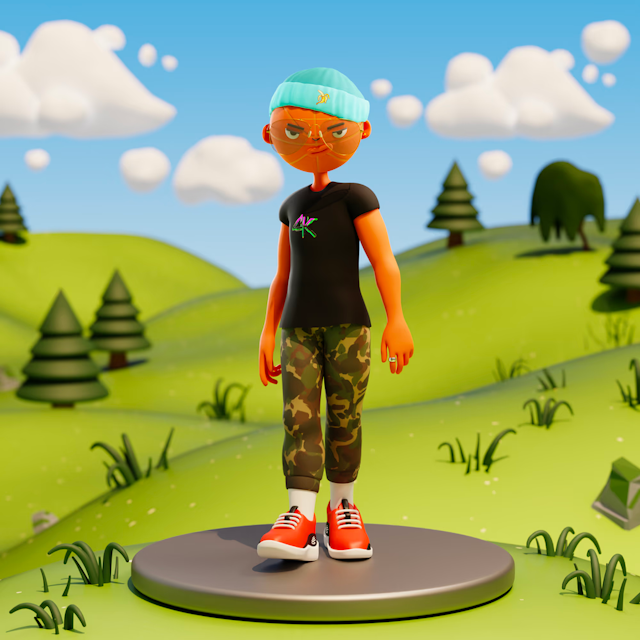Inside Berlin Cameron’s Successful Steph Curry NFT Drop: ‘You Must Be Welcomed In’
When Steph Curry became the greatest three-point shooter in NBA history, Berlin Cameron decided to mark the occasion by releasing an NFT sneaker. All 2,974 virtual tokens were sold within minutes, and now – even as the NFT industry rolls under the ongoing “crypto winter” – the agency plans to expand the campaign. Here’s a behind-the-scenes look at the project’s success.
In December 2021, Steph Curry of the Golden State Warriors lowered that 2,974. career three-point shot, marking a new NBA record. As San Francisco’s Chase Center roared with cheers from fans wearing blue and red, an idea began to hatch in the Berlin Cameron agency: What if Curry’s massive popularity could be turned into an NFT project?
Shortly after Curry scored his record-breaking shot, Berlin Cameron teamed up with Under Armor and Curry himself to launch the “Genesis Curry Flow NFT.” The drop contained 2,974 tokens (in honor of Curry’s new record) each of which is a virtual wearable modeled after the Curry Flow – a basketball shoe, now in its tenth iteration, designed by Under Armour.
The NFTs, priced at $333 a pop (another tribute to Curry), sold out in about 10 minutes, according to Berlin Cameron’s website. The drop also aimed to raise $1 million for Under Armor charities, a goal that was “immediately met.”
A step towards interoperability
Much of the success of the NFT drop can be attributed to the fact that the virtual sneakers can be accessed in four separate virtual ecosystems: Decentraland, The Sandbox, Gala Games and Rumble Kong League (RKL). “I think that’s why it won so many awards,” says Ewen Cameron, founder of Berlin Cameron. “That was the first [NFT project] to really do it.”
Typically, virtual wearables can only be used on a single platform. This has long been a thorn in the side of the gaming community. Many companies working in the web3 space have struggled to solve the “interoperability problem” – that is, to create blockchains that can seamlessly transfer information between each other, which in turn can create a sense of a persistent virtual identity.
After all, the metaverse—at least as imagined by experts like Neal Stephenson and Matthew Ball—should not be balkanized into discrete experiences; it should be a single sphere of activity, with virtual assets and avatars bouncing around unchanging from one experience to the next.
Building interoperability is extremely technically complex, and it will probably take some time before it becomes feasible on a wide scale. But the Genesis Curry Flow NFTs got around the technical difficulties by simply dropping four separate versions of each token “interpreted in the game language of each of those platforms,” Cameron says, which could then be accessed by holders. In other words, it created the feeling of interoperability – and for many players, that’s probably enough.
The Genesis Curry Flow NFTs varied to reflect the unique graphical characteristics of each platform. Avatars are boxy and pixelated in The Sandbox, for example, while in Decentraland they are more anthropomorphic. The virtual sneakers were designed with these idiosyncrasies in mind, so they wouldn’t look out of place on any of the four platforms they were built for.
Berlin Cameron has taken to calling Genesis Curry Flow NFT holders “Basketball Headz” – so named for their avatars’ basketball-shaped heads, created in collaboration with the four gaming platforms – and it plans to continue engaging with them going forward. Later this year, the agency plans to launch a series of virtual wearables, with “interoperable avatars” to follow in early 2023. “It’s about an ongoing commitment to building community through collectibles, and then merging the physical and digital worlds to create a more exciting and dynamic brand,” says Cameron.

Other ingredients for success
The success of the Genesis Curry Flow NFTs was caused by more than just their cross-platform availability.
First, the decline was also helped by the fact that Curry himself is an active player and NFT investor. (He owns a Bored Ape.) “It was an environment where there was so much shilling going on, but Steph was believable,” says Cameron. “NFT fan liked Steph Curry.”
Timing was another important factor. Late 2021 was in many ways the high season for NFTs, a peak in their popularity and profitability. “It was a very sexy moment,” says Cameron.
The onset of the “crypto winter” in May this year caused a general contraction in the NFT market. Amid rampant inflation, investors were suddenly much less willing to buy risky virtual assets. But Berlin Cameron remains dedicated to “community over profit” in the Basketball Headz community, says Jennifer DeSilva, the agency’s president. Cameron adds that the project is “much more about building a long-term community than it is about, ‘What’s my NFT worth today?’ Because nobody’s NFT today is worth what it was a year ago.”
Another crucial factor, according to the agency, is that the NFT project started through conversations with players to understand what they were actually looking for, and how a brand like Under Armor could actually step in to meet those needs. “The special sauce here was our ability to get into these niche communities from the ground up,” says Jenniver DeSilva, president of Berlin Cameron. “We came in through the players … who really helped us build this foundation across the different communities, which was very unique.”
Cameron echoes this sentiment, stressing the need for a community-oriented approach for brands looking to enter the web3 space: “You have to get consumers to welcome you in,” he says. “Brands don’t think like that — they’re still talking about, ‘How do we own the metaverse?’ You cannot own the metaverse. You must be welcomed in.”
For more, sign up for The Drum’s Inside the Metaverse weekly newsletter here.


